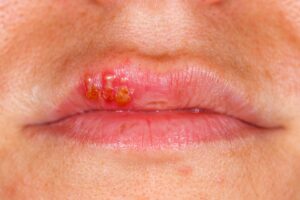 Herpes simplex is a common viral infection. In fact, if you’ve ever had a cold sore or fever blister, you picked up the herpes simplex virus. Most cold sores are caused by herpes simplex virus type 1 (HSV-1). Cold sores caused by HSV-1 are also called oral herpes, mouth herpes or herpes simplex labialis.
Herpes simplex is a common viral infection. In fact, if you’ve ever had a cold sore or fever blister, you picked up the herpes simplex virus. Most cold sores are caused by herpes simplex virus type 1 (HSV-1). Cold sores caused by HSV-1 are also called oral herpes, mouth herpes or herpes simplex labialis.
After clearing, herpes simplex sores can return; the outbreak tends to be milder than the first outbreak. A closely related herpes simplex virus, HSV-2, causes most cases of genital herpes. But either HSV-1 or HSV-2 can cause a herpes sore on the face or genitals. If you have HSV-1, a bad sunburn can trigger a herpes simplex outbreak.
Many people who get the virus that causes herpes never see or feel anything. However, you may experience tingling, itching or burning for a day or so before one or more painful, fluid-filled blisters may appear. Blisters break open and often ooze fluid and form a crust before healing.
